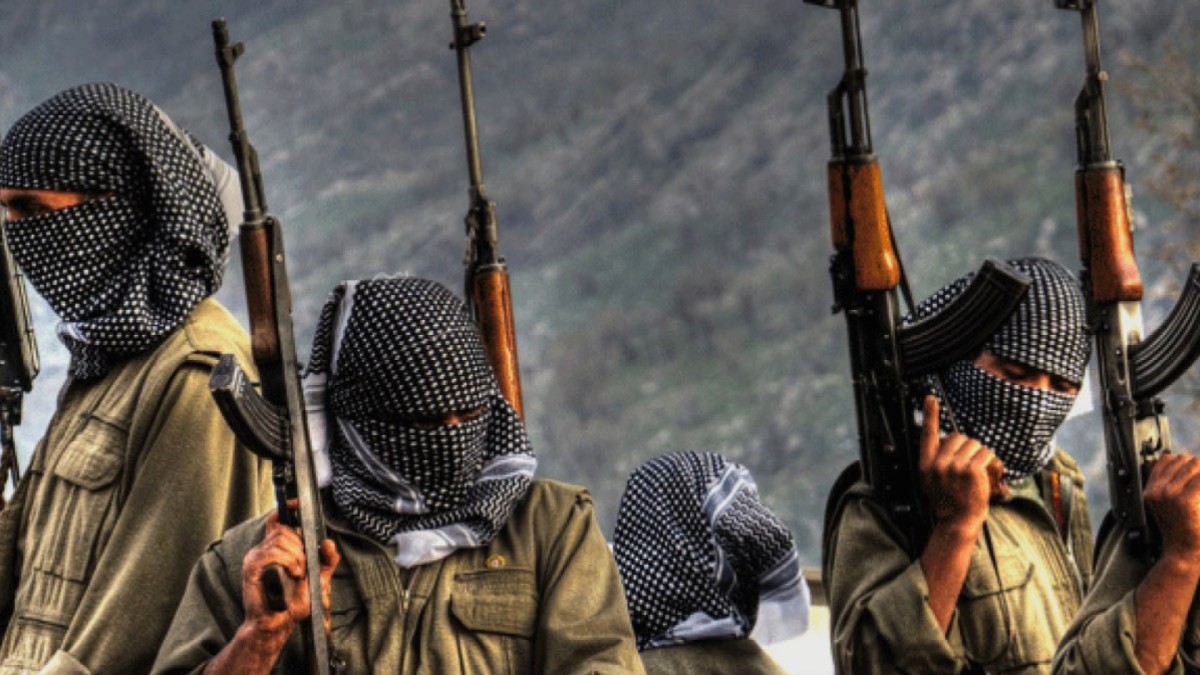 74
74
With the outbreak of turbulence in Iran in recent months, the name of a western province—the region where armed and terrorist activities followed the unrest—has been heard more frequently: Kurdistan.
Terrorist gangs such as Komala and the Kurdistan Democratic Party [HDK] emerged in the Kurdish areas in recent decades, with the assistance of the US and the Zionist regime, seeking to split off Iran’s Kurdistan.
These militias briefly overran several Kurdish districts by exploiting the chaotic circumstances in the early stages of the 1979 Islamic Revolution. However, their unethical and violent conduct caused them to lose the support of the locals, and ultimately they were driven out by the inhabitants.
Over time, however, these groups endeavoured to whitewash and deny their ignominious pasts and are now acting like agent provocateurs, sowing turmoil, instability, and disorder in tranquil communities.
Three CIA-trained Komala fighters in northern Iraq spoke with Al-Arabiya about their role in the unrest in Iran. Kaku Aliyar, a member of the Komala Central Committee, admitted, “We urged people to come to the streets during the evening on strike days.”
“During this time, we carried out measures through our fellow comrades in Iran, who are engaging in inciting the public,” said Rozhin Ali Mahmoud, a member of the Peshmerga forces. “Our fighters within Iran played a significant role in organising and directing the protests,” asserted Mima Mohammadi, a senior Peshmerga commander.
Meanwhile, the commander of the Hamzeh Seyyed-al-Shohada military headquarters stated, “The northwest region of the country is rigorous and challenging, and over the past month, we have seized a massive amount of weapons and ammunition from terrorists who were attempting to transfer weapons and equipment to central cities.”
General Osanlu continued, “This demonstrates that the enemies are exerting all they can to accomplish their malicious intentions, but the essential point is that their efforts have been and always will be to no avail.”
The formidable strength of the Islamic Republic of Iran’s military on the northwest border is superb, indicating that our intelligence capabilities are exceptional. General Osanlu added, “We caught more than 100 terrorists during the recent unrest. The vast majority of them were from the Komala and HDK groups.”
“Since the end of 2021, and according to a report, following the assassination of General Haj Qasem Soleimani, we have been engaged in a full-scale cold war with the Iraqi Kurdistan Regional Government [KRG],” a senior security official told the state-run IRNA news agency.
This tension is because the Zionists use the KRG to destabilise our national security. During Dr Fakhrizadeh’s martyrdom, some culprits fled through the KRG or used the KRG to assassinate Martyr Sayyad Khodaei.
Additionally, imported weapons were supplied via the KRG. In this regard, since the Zionists concocted a rather sophisticated terrorist plot, the nature of the intelligence ministry’s ongoing investigation in Isfahan is still confidential.
Those Komala and HDK adherents are actively involved in the joint operation room and not merely in the intelligence planning room. The Zionites’ top picks for carrying out the sabotage activities were Komala and the Democrats. These detainees were Komala and HDK sympathisers handed over to Israeli intelligence for being employed in terrorist actions.
According to official reports, West Azerbaijan, Khuzestan, and Kurdistan are the three provinces with the most significant weapons depots. Examining the recent reports about the discovery of weapons and ammunition demonstrates two incontrovertible facts:
First, more weapons and ammunition were discovered in provinces with more aggressive protests and where militant rioters had targeted and murdered ordinary citizens or security personnel.
Second, the intensification of arms trafficking had already begun even months before the onset of the unrest. Most of the weapons smuggled into Iran have crossed the border with the KRG and been used in terrorist attacks.
Iranian officials blame the KRG for most of the violence in the country today, so the Islamic Revolutionary Guard Corps (IRGC) launched missiles against the command centres of the Kurdistan Democratic Party and Komala, both of which were designated terrorist organisations by Tehran.
Kurdish militants’ headquarters in the KRG has been struck repeatedly in recent days. The Iranian authorities have reiterated that if the KRG authorities do not take concrete measures to disarm these terrorists and the Iraqi army is not stationed on the Iran-Iraq border in the Kurdish regions; they will continue to strike terrorist headquarters and hideouts in Iraqi Kurdistan.
With the round-the-clock efforts and sacrifices of the Iranian security guards, particularly the aerospace and ground divisions of the IRGC, the enemies of the fatherland have faced utter failure, and it is hoped that with the seriousness of the new Iraqi administration, the other side of the borders will also be neutralised from terrorist elements.
Comment
Post a comment for this article